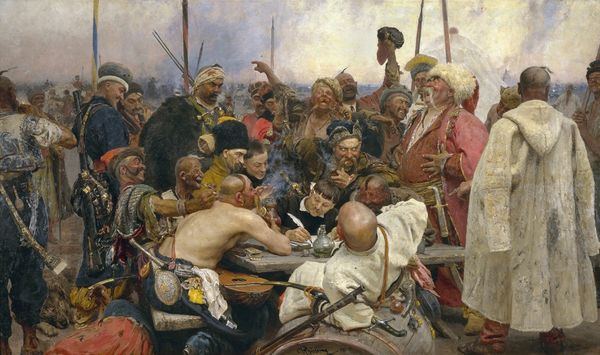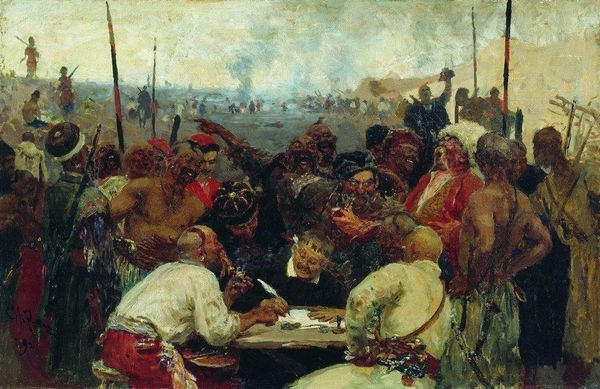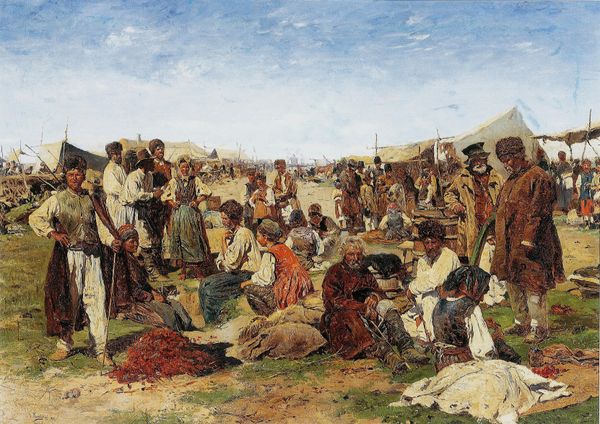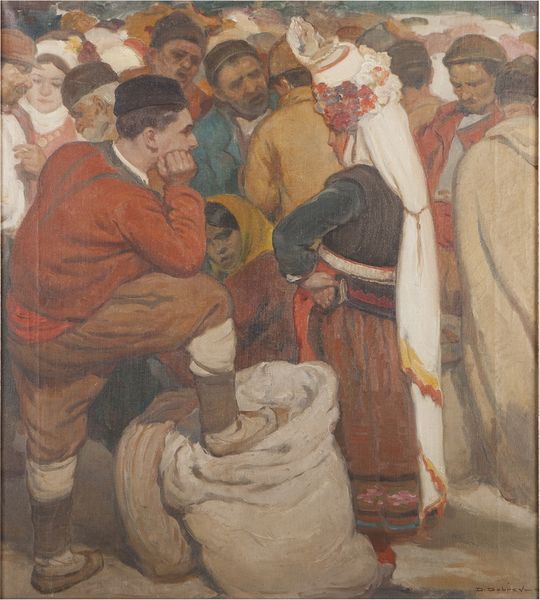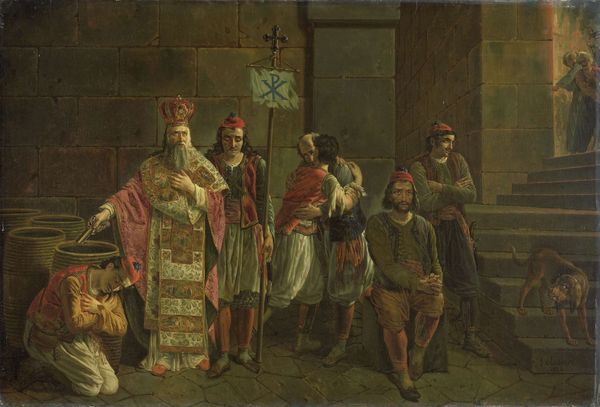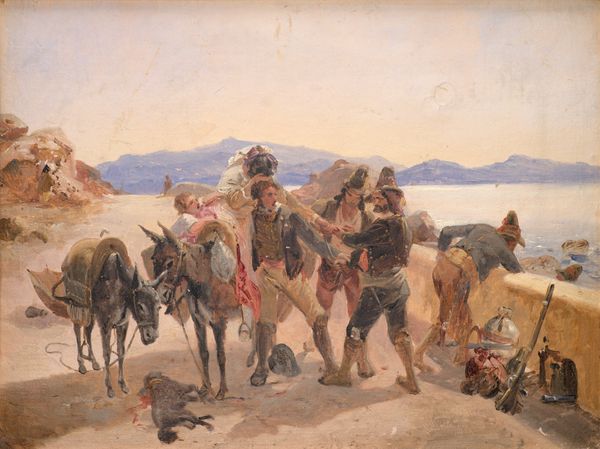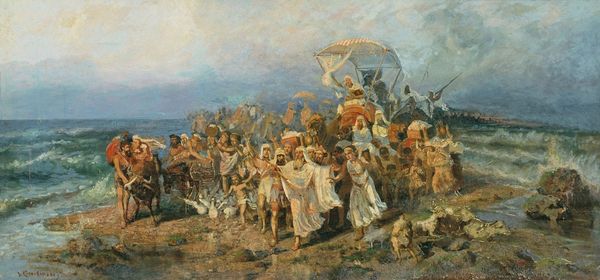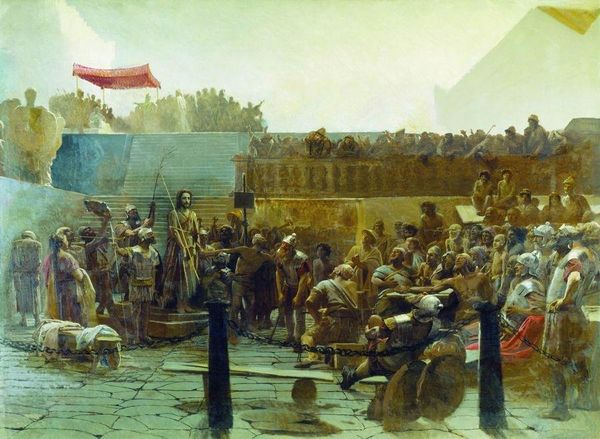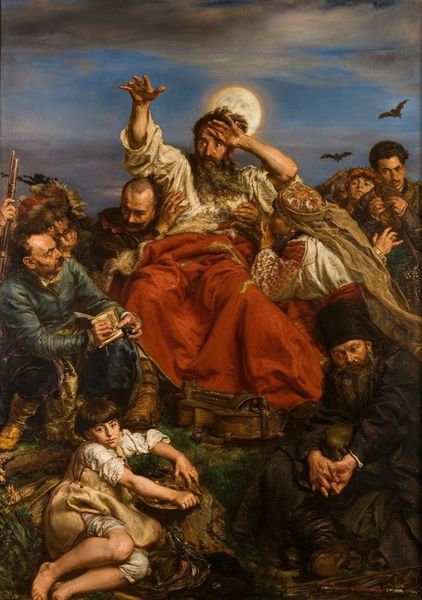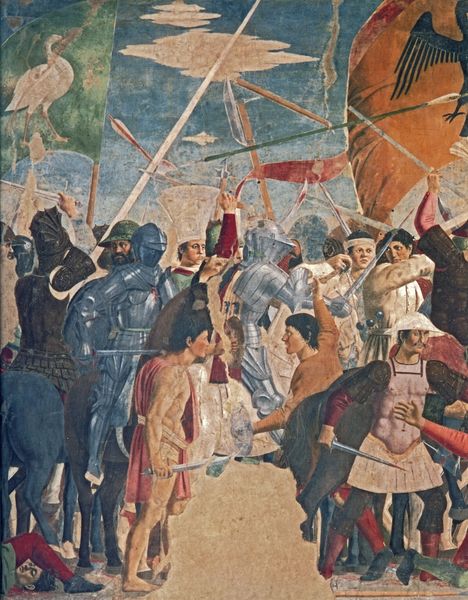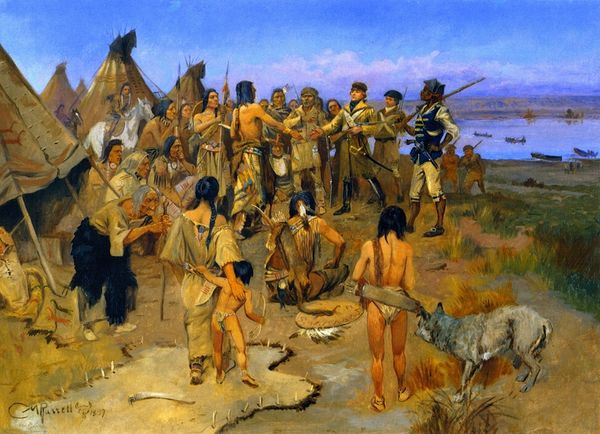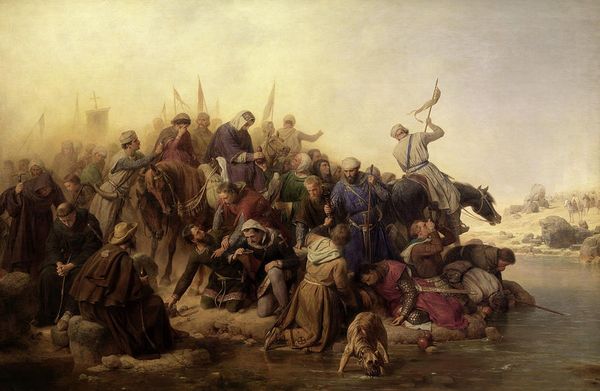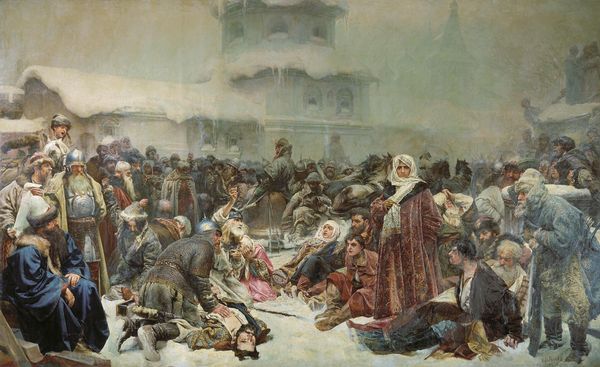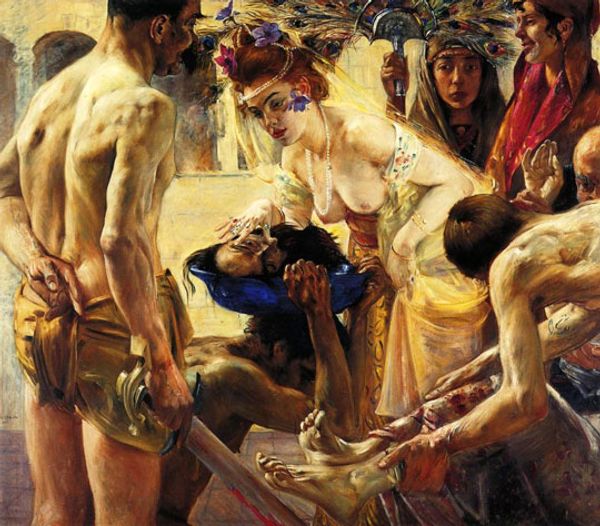
The Reply of the Zaporozhian Cossacks to Sultan Mahmoud IV 1891
0:00
0:00
ilyaefimovichrepin
Kharkiv Museum of Fine Arts, Kharkiv, Ukraine
painting, oil-paint
#
painting
#
oil-paint
#
figuration
#
oil painting
#
russian-avant-garde
#
genre-painting
#
history-painting
#
realism
Dimensions: 217 x 361 cm
Copyright: Public domain
Editor: Ilya Repin’s 1891 oil painting, "The Reply of the Zaporozhian Cossacks," really bursts with energy! The laughter is infectious, and I can almost hear their boisterous voices. What’s the story behind all this mirth? Curator: Well, the painting depicts a legendary scene: the Zaporozhian Cossacks supposedly penning a response to an ultimatum from Sultan Mehmed IV of the Ottoman Empire. Repin's interest in this subject stemmed from his engagement with populist movements advocating for self-determination, reflecting the ongoing dialogues of imperial dominance and resistance. Look closely; how does Repin use the composition to convey power dynamics, would you say? Editor: I guess, placing the scribe centrally while surrounding him with gleeful participants distributes the focus. Rather than a singular "hero", it emphasizes a shared cultural action that comes about when resisting centralized powers. Curator: Exactly! This isn’t just a humorous scene; it's about asserting collective identity. What choices, would you say, has Repin done to indicate Ukrainian national consciousness amidst the Russian Empire’s art scene, given Repin's connection to the Imperial Academy? Editor: By showcasing the Cossacks' distinct culture and fierce independence in a period painting like this, he carves out a space of Ukrainian identity. It sort of brings forth this image of national resilience against imperial subjugation. The painting acts almost like an idealized origin moment. Curator: Precisely! The museum context then shapes how viewers perceive that “idealized origin moment.” The display within, say, the Kharkiv Museum – what statements is being made about Ukrainian art history there, considering it's been shaped by varied political powers? Editor: Understanding art as a reflection of cultural dialogue between groups struggling for social independence definitely adds so much meaning to the artwork! Thanks for helping to see this in a whole new light! Curator: My pleasure. These layered interpretations and complex historical analyses offer us much food for thought in considering what art communicates in public and political settings.
Comments
No comments
Be the first to comment and join the conversation on the ultimate creative platform.
